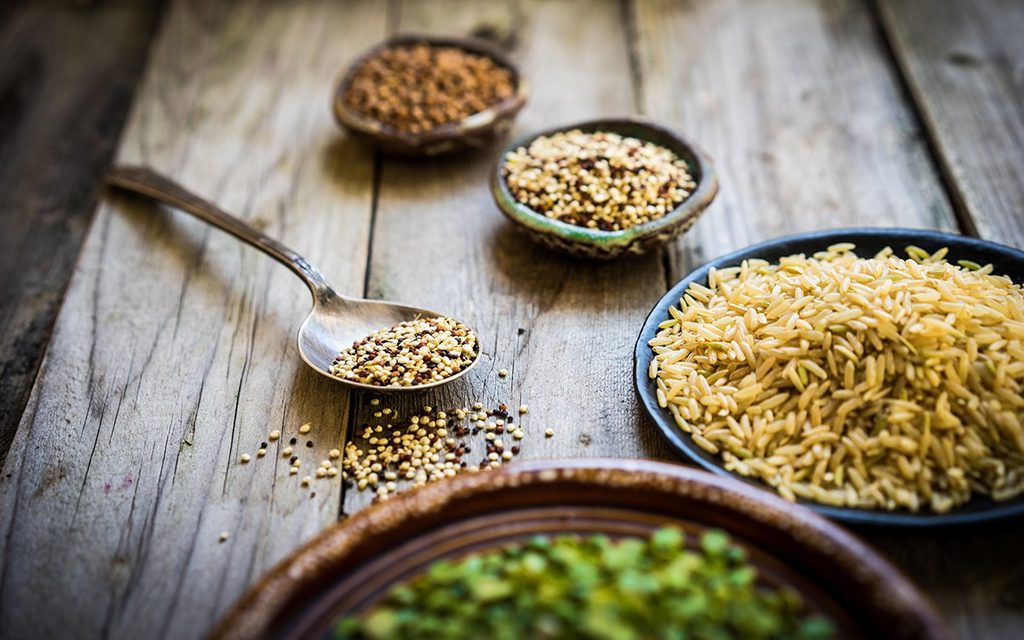Wild Rice vs. Brown Rice vs. Quinoa—Which Is Best?
Updated: Oct. 04, 2019

Searching for the healthiest whole grain? Join us as we compare wild rice, brown rice and quinoa to discover which grain is best for your diet.
There’s no doubt that whole grains are the way to go if you want to make a healthy tweak to your diet. But which boasts the most benefits? Wild rice, brown rice, and quinoa are no doubt good for you—and each has a different set of health benefits—but which is healthiest? Let’s compare.
Which is better, brown rice or wild rice?
If you’re looking to cut calories and up your protein intake, wild rice is the better option. A serving of wild rice contains fewer calories and boasts double the protein content of brown rice. Wild rice also has all nine essential amino acids, which we need for things like building muscle and regulating metabolism, mood and the immune system.
Both types of rice are great sources of fiber, antioxidants, and nutrients like manganese, magnesium, and phosphorus. Brown rice does have more B vitamins compared to wild rice (making it a great choice if you’re on a meat-free diet), so alternating between the two won’t have any drawbacks. If you’re diabetic or pre-diabetic, both wild rice and brown rice can reduce blood sugar.
Editor’s Tip: Here’s an interesting fact: Despite the name, wild rice is actually a type of grass that belongs to the Zizania family. Brown rice, like white rice, are members of the Oryza family. Flavor-wise, wild rice has a stronger, earthier taste than mild, nutty brown rice.
Is wild rice or quinoa healthier?
Like wild rice, quinoa has all nine essential amino acids. This pseudo-cereal is packed with protein, fiber, and loads of minerals like iron and zinc. There’s a reason why it’s been widely hailed as a superfood. Quinoa and wild rice are comparable in terms of their nutritional benefits. Their vitamin and mineral contents are slightly different but one isn’t necessarily healthier than the other. Eat both and get the best of both worlds.
One thing to note—quinoa is slightly higher in calories than either wild or brown rice. It’s best enjoyed in smaller portions as a side dish, in a salad or as a substitute for oats or rice. You’re also going to want to make sure you’re checking the shelf life on all these grains. Quinoa is just one of the pantry items you’re keeping far too long.
Which is better, rice or quinoa?
When pitted against rice, quinoa wins the title of healthiest whole grain thanks to its protein, fiber, and essential amino acid content. But as we’ve discussed above, both quinoa and brown rice are excellent sources of many of the vitamins and minerals we need in a healthy diet.
The Takeaway:
So what’s the bottom line? Wild rice, brown rice, and quinoa all make excellent additions to your diet. All three are gluten-free, which is handy if you’re sensitive to gluten or simply trying to cut down on your gluten intake. And they all are better for you than white rice, thanks to each grain’s high fiber, protein and nutrient contents.
The best part? They all taste great and their versatility means you can whip up a quinoa salad one night, tuck into a hearty rice bowl the next and round the week off with a wild rice bake—all while reaping health benefits. This grains debate isn’t the only common kitchen conundrum we all face, but here’s the definitive answer on another one: which is better for you, coffee or tea?